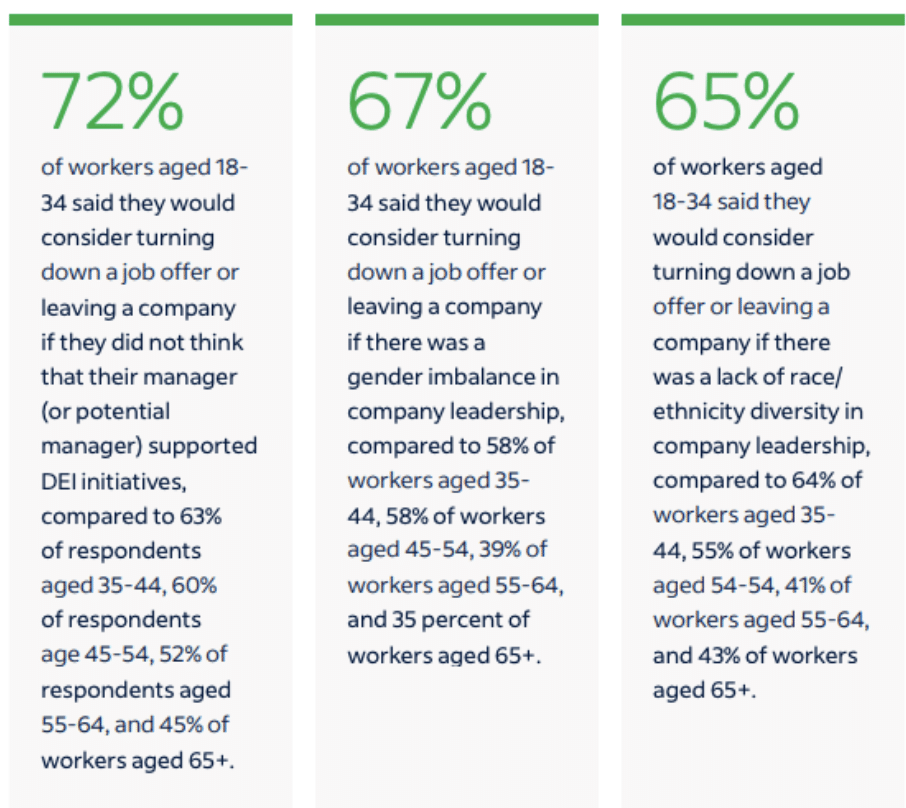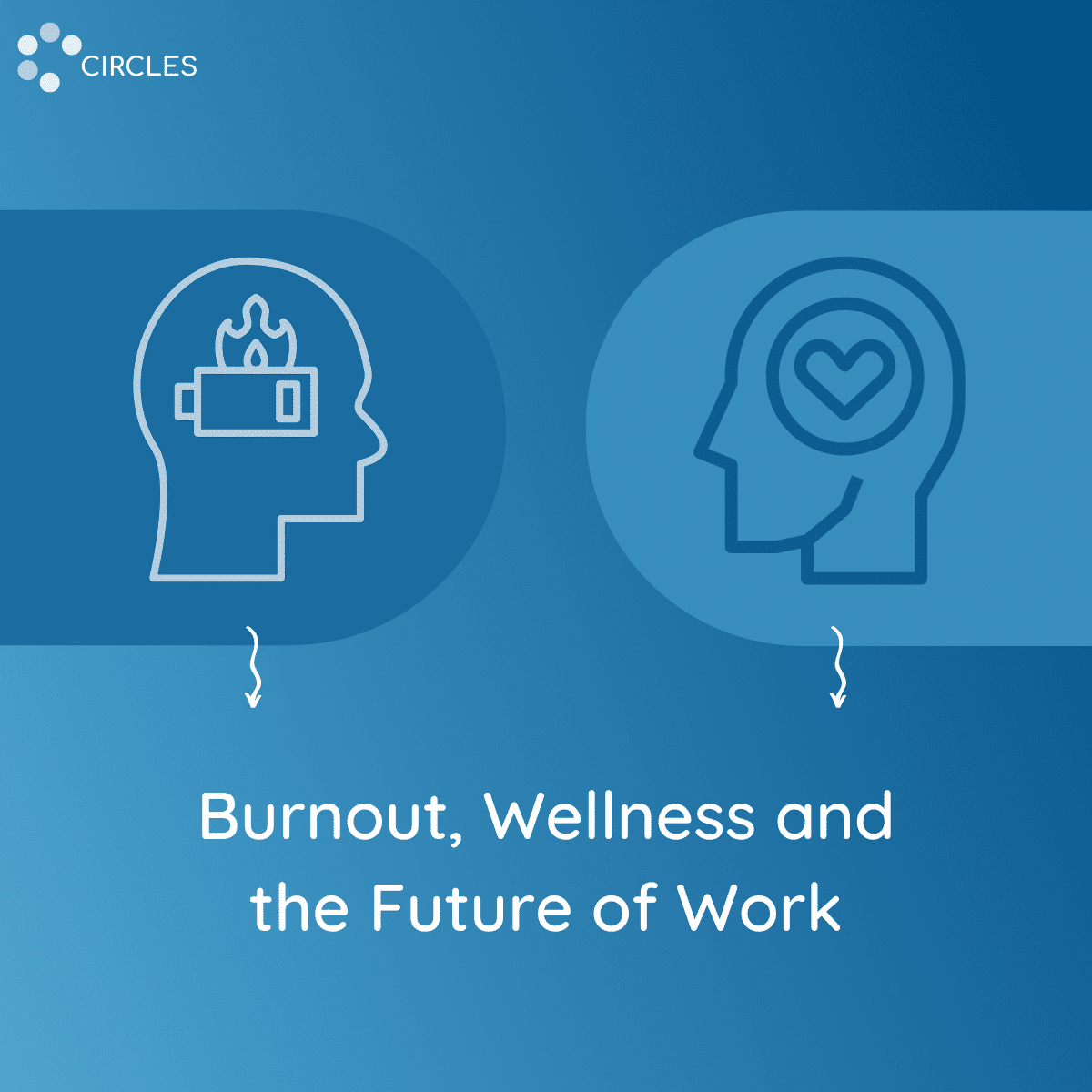Glassdoor along with Indeed recently put out a joint hiring report highlighting workforce trends to watch. Three significant elements from their list include: remote work is here to stay, happiness and wellbeing matter, and the changing workforce is pushing diversity, equity, and inclusion (DEI) to the forefront.
In many ways, all three topics are intertwined and at the heart of the current movement to transform company cultures.
What’s at Risk With Hybrid & Remote Work
As the report showed, 2023 workplace hurdles to overcome include disconnected teams. Of course, remote and hybrid work certainly offer advantages. People experiencing marginalization often feel safer working from home, workers sacrifice less time away from family, and commuters and cars are off the roads.
Yet distributed teams isolate employees, and experts agree this breakdown of community increases the chance of burnout. Last month, the New York Times mentioned burnout twice in its list of ten steps to better mental health; at the same time, they cautioned against confusing burnout with depression.
So what exactly is burnout?
Burnout Defined
Psychology Today defines burnout as “a state of emotional, mental, and often physical exhaustion brought on by prolonged or repeated stress.” Most often caused by workplace stress, burnout often stems from a feeling of futility and loss of control.
According to this report, incidents of burnout are on the rise–especially for middle managers, the ones trying to keep teams connected and prioritize wellness for everyone else. These are the very leaders we interact with in our Circles community of practice; indeed, when we asked one L&D leader what to watch for in 2023, she listed ‘burnout’ in her top five.
Prioritizing employee wellness initiatives is likely the best way to mitigate burnout, and employees have come to expect a focus on their wellbeing–in fact, some are taking matters into their own hands. The 2023 version of “quiet quitting” is called “the anti-work movement.”
The Anti-Work Movement
Recently, Ariana Huffington predicted that we will no longer wear burnout as a badge of honor–and the rise of the anti-work movement certainly seems to prove her point. Much like how the misnomer quiet ‘quitting’ circulated 2022 headlines, however, those spearheading the anti-work movement aren’t actually against working–they’re against workaholism. “The anti-work movement often leads to people finding ways to make just enough money to get by. They will have more leisure time, rather than working long hours to earn more money.”
Both movements consist of a groundswell of conscientious young workers banding together, committed to choosing wellness over wealth and burnout. The next generation of workers is signaling to their leaders the importance of prioritizing health and wellness.
Wellness Initiatives to Combat Burnout
To improve the state of the workplace, Gallup suggests both engaging employees and investing in their wellbeing so they can truly thrive, revealing that “Employees who are engaged at work but not thriving have a 61% higher likelihood of ongoing burnout than those who are engaged and thriving.”
Workplace wellness includes everything from expansive healthcare that includes elements like mental health benefits, to Employee Resource Groups, safe spaces where employees can connect with others with whom they have an affinity. According to the leaders in our circles, ERGs are safe spaces employees at all levels, themselves included. Glassdoor gathered their ERGs on our platform for breakouts because of our platform’s safe design and inclusive features.
ERGs remain many companies’ leading inclusion initiative, a focus which resurged during the early days of the pandemic in response to world events and social unrest.
Diversity Equity & Inclusion was not a fad

ERGs and inclusion initiatives like them are not new–they originated during the civil rights movement and have ebbed and flowed with societal influences ever since.
Glassdoor & Indeed’s joint report confirmed: the changing face of the workforce will continue organically and intentionally pushing inclusion to the forefront. “As older workers vacated jobs during the pandemic, their younger counterparts find themselves in a position to demand more when it comes to social justice.”
Due in large part to the changing demographics of the U.S. and its workforce, these initiatives will continue becoming intrinsic to who we are. As the report concludes ”The workforce of tomorrow will care deeply about DEI initiatives and employers will use these programs to continue to differentiate themselves in a continuously competitive labor market. Plus, it’s not only good for workers—it’s good for business and for society.”
Conclusions
Together, companies have the opportunity to reinvent themselves into something better, wiser and healthier for the world, and perhaps we can all benefit from the invitation to check our boundaries and avoid burnout. Everyone wins when we incorporate fresh wisdom from the next generation of workers. With the proper inclusion efforts, corporate spaces can lean into the wellness opportunities this next generation of workers are looking for in the workplace.
Are you looking for inclusive spaces to connect your distributed employees? Need a safe place for your ERGs to gather? Schedule a demo with one of our community growth managers today!
